Smoked Beef Jerky Made at Home—Safely
If you’ve never made beef jerky before, now is the time—it’s easier than you think! It’s a simple process, you can use your own smoker, and it tastes better and costs less than what you can buy at a store. Preparing beef jerky at home that’s guaranteed to be safe to eat can be tricky, but we have a recipe, expert tips, and the thermal secrets you need for beef jerky success!
Preserving meat is an ancient practice to utilize every part of the animal. Today’s beef jerky is delicious, practical, and convenient. Since it doesn’t require refrigeration, it’s ideal for campers, backpackers, any outdoor enthusiast, or anyone who needs portable, shelf-stable, nutritionally-dense food.
Top 7 Tips for Perfect Beef Jerky
In his book, Project Smoke, BBQ expert Steven Raichlen shares 7 key tips for beef jerky success.
- Use lean cuts of meat with very little connective tissue such as top or bottom beef round. Fatty meats turn rancid quickly and will shorten the shelf life of your jerky.
- Cut the meat into thin slices. 1/8 to 1/4-inch (1/3 to 2/3-cm) slices work best. Partially freeze the meat for easy slicing (about an hour in the freezer), or have your butcher slice it for you.
- You can turn any type of meat into jerky! Beef is the most popular, but you can make jerky with venison, moose, mule deer, antelope, elk, rabbit, and bison.
- Heat to a food-safe temperature of 150-160°F (71°C).
- When making turkey or chicken jerky, be sure it reaches a food-safe temperature of 165°F (74°C).
- Drying meat requires low temperatures (160-180°F [71-82°C]). A low drying temperature is crucial. If the environment is too hot, the exterior of the meat will form a crust that does not allow the interior moisture to evaporate. This is great for steaks on the grill, but too much heat works against the jerky making process.
- Maintain constant low-temperature heat in your cooker. Electric smokers are great for jerky because they maintain consistent low temperatures very well.
- Store jerky in zipper-lock plastic bags. Package the jerky while it’s still warm. Condensation will collect in the bag as it cools, softening the meat.
Shelf Stability and Food Safety
Beef jerky is shelf-stable because nearly all of the moisture has been removed. Microorganisms cannot grow in the absence of moisture, so spoilage is diminished. Beef jerky is most commonly prepared by dehydration, cooking in a low-temperature oven, and smoking. The use of curing salts helps to destroy pathogens.
➤ Water Activity
Commercially prepared beef jerky is made in facilities that are monitored by the health department for food safety. They also have the equipment needed to accurately determine water activity. Water activity is the water available in a food product for microorganisms to grow. Shelf stable beef jerky has a water activity level of 0.70 to 0.85.
Most people who make jerky at home judge it to be done at water activity levels higher than 0.85. For this reason, other methods of preparation and testing for doneness must be used to ensure the safety of your dried meats.
Homemade beef jerky is far more likely to cause foodborne illness than store-bought jerky. Thermal denaturation of bacteria (explained below) is the simplest sure-fire way to make sure your food is safe to eat.
How do You Know When Beef Jerky is “Done?”
Jerky can be considered “done” and safe to eat only when it has been heated sufficiently to destroy any pathogens present and is dry enough to be shelf-stable. —Making Jerky at Home Safely, Pacific Northwest Extension
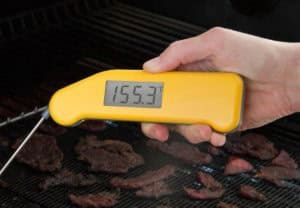
For proper heating and drying, monitor the internal temperature of your smoker with an alarm thermometer like the ThermoWorks® ChefAlarm® with a Pro-Series® Air Probe and Grate Clip.
Safely Making Jerky Without a Smoker
If you’re using a food dehydrator that does not reach the temperature range of 160-180°F (71-82°C), you can still ensure its food safety with a quick additional step.
➤ Post-Drying Heating
After your jerky is completely dried, heat it in a 275°F (135°C) oven for ten minutes. Spot-check the internal temperature of your jerky with a Thermapen to be sure it’s reached a temperature of 150-160°F (66-71°C). With this final, quick step you can be sure your jerky is pathogen-free.
Beef Jerky Recipe
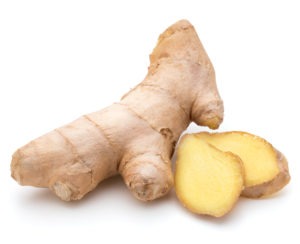
Ingredients
2-3 pounds (7/8 to 1-1/3 kg) trimmed lean meat such as eye of round or top or bottom round
- 1 cup (237 ml) soy sauce
- 1/4 cup (59 ml) apple juice
- 2 tbsp Worcestershire sauce
- 2 tbsp balsamic vinegar
- 1/2 cup (118 ml [170 grams by weight]) honey
- 5 tbsp finely grated fresh ginger
- 1 tbsp coarsely ground black pepper
- 1 tbsp hot sauce
Instructions
Prep
- Freeze the meat while preparing the marinade. The meat should be only partially frozen—firm, but still sliceable.
- Combine all of the marinade ingredients in a medium-sized bowl and whisk to mix well. Set aside
- Once the meat is partially frozen, slice into 1/8 to 1/4 inch (1/3 to 2/3 cm) slices.
➤ Cut With or Against the Grain?
Beef jerky is widely available cut both with and against the grain. If you cut your slices against the grain it’ll be easier to chew. If it’s cut with the grain the protein fibers that become firm and pliable through the drying process will give your jaw a workout. It’s up to you.
- Place the meat slices into a gallon size zipper lock bag and pour the marinade over the meat. Massage the meat in the bag to evenly distribute the marinade.
- Set the bag into a container or sheet pan on the bottom shelf in your refrigerator and chill for 24 hours.
Cook Day
Heat your smoker to 160-180°F (71-82°C). Track the internal temperature of your cooker by securing a Pro-Series® Air Probe to the grate of your smoker with a grate clip. We’re using a ChefAlarm (you can also use Smoke™).
- Set your ChefAlarm‘s high alarm to 185°F (85°C), and the low alarm to 155°F (68°C). Having these alarms set will help you keep your smoker at the perfect cooking temperature.
- Add wood chips or chunks and allow smoke to develop while you’re preparing the meat.
- Drain the meat from the marinade and pat dry with paper towels.
The real secret, whether smoker or oven, is to prep your jerky before drying. Removing the meat from the marinade and patting off the excess moisture is crucial for even cooking. —Dr. Pepper Jalapeño Beef Jerky, Hey Grill, Hey
- Arrange the meat slices onto heatproof grilling mesh or metal cooling racks, being sure none of the slices are touching. For even drying the slices need room for air circulation.
- Set the racks or mesh onto your smoker’s grate, close the lid, and let it cook.
➤ Keep the Temperature Low and the Air Circulation High
If you wish, you can prop open the lid of your cooker to let heat escape in order to keep the cooking temperature down. This will also increase air flow. If you normally use a water pan, skip it today. The goal is dehydration not moisturizing. —Not an Elitist Jerk Beef Jerky, AmazingRibs.com
- Total drying time varies and depends on how well your smoker’s temperature is maintained, humidity, the type of marinade used, and the thickness and size of your meat slices. It will likely take about 3-6 hours.
- When checking the jerky, you’re looking for signs of progression toward doneness such as shrinkage. The finished jerky should be leathery, bend easily with only a few cracks, and have no wet spots.
➤ Fun Fact: Meat is 70-75% water. Sixteen ounces of fresh meat will make about 4 ounces of finished jerky.
- After you’ve judged that your jerky appears to be done, spot-check its internal temperature with a Thermapen. Once you have verified an internal temperature of 150-160°F (66-71°C) and the jerky is thoroughly dry, remove from your smoker.
- Experts recommend placing the warm jerky into plastic containers or bags slightly ajar to allow condensation to soften the driest areas of the meat.
- If you can keep yourself and everyone else from devouring the fresh jerky, it is also recommended to store the cooled jerky at room temperature for 24 hours to allow it to “condition.” The conditioning time period allows the moisture left in the meat to equilibrate throughout the pieces of jerky.
Jerky Economics
The [process] of turning meat into jerky takes time but it’s not a difficult process. That’s a big part of why it costs so much in stores. Pound for pound it’s some of the most expensive meat you can buy, but if you don’t mind putting in a little work you can make your own jerky for a fraction of the cost. —Smoked Beef Jerky & Smoked Deer Jerky, HowToBBQRight.com
Storage
After it’s been packaged in a sealed container, your homemade beef jerky can be stored at room temperature, refrigerated, or frozen. Label and date the zipper lock bags or containers so you’re sure to know when the best time frame will be to consume the jerky depending on the storage method you choose.
- Room Temperature: 2 weeks
- Refrigerated: 3 to 6 months
- Frozen: Up to 1 year
Making your own beef jerky is easier than you think, and foolproof when you can track temperatures precisely. Once you taste it for yourself you’ll be hooked!
Products Used:
Resources:
Making Jerky at Home Safely, Pacific Northwest Extension (2012)


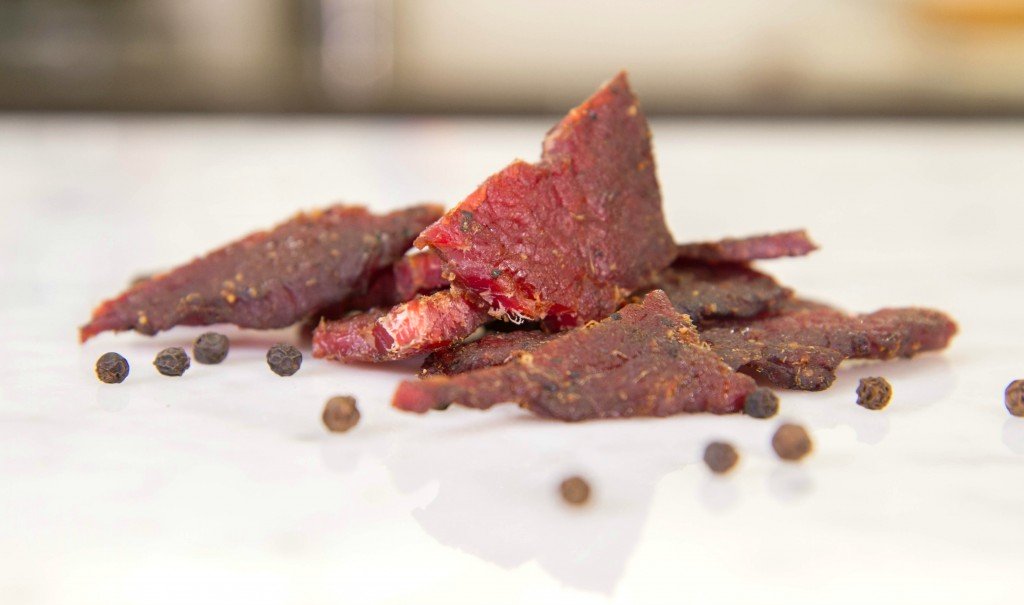

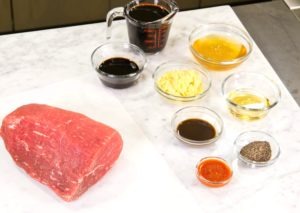 2-3 pounds (7/8 to 1-1/3 kg) trimmed lean meat such as eye of round or top or bottom round
2-3 pounds (7/8 to 1-1/3 kg) trimmed lean meat such as eye of round or top or bottom round


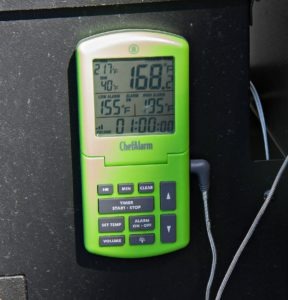 Heat your smoker to 160-180°F (71-82°C). Track the internal temperature of your cooker by securing a Pro-Series® Air Probe to the grate of your smoker with a grate clip. We’re using a ChefAlarm (you can also use
Heat your smoker to 160-180°F (71-82°C). Track the internal temperature of your cooker by securing a Pro-Series® Air Probe to the grate of your smoker with a grate clip. We’re using a ChefAlarm (you can also use 



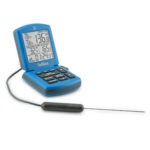
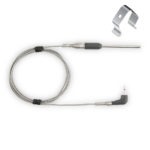
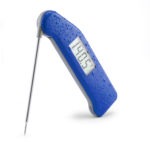
you should give the amounts of the major ingredients especially the honey in grams so one doesn’t have to try and empty a half cup measure
Metric measurements have been added. Thank you for the suggestion!
-Kim
Is there a reason pork is not included? A pork loin looks like it would make some fine jerky
KD,
Thank you for your question! Pork can indeed be made into jerky safely. Just be sure to heat it to a safe temperature, and choose cuts that are lean and free from connective tissue. Pork loin will work well.
Thanks!
-Kim
How do you make jerky in the oven? At what temperature and how long ?
Mary,
The process will be nearly identical. Set your oven’s temperature as low as it will go—if you can set it to 180°F that will be perfect. The lowest temperature of many ovens is 200°F. Crack the oven door open for the duration of the drying time to help keep the temperature lower and to allow humidity to escape. The drying time will be within the same window of time as the smoked beef jerky (3-6 hours), and how long yours takes will depend on the size of the size of the slices and how well your oven’s temperature is maintained.
You can add 2 teaspoons of liquid smoke to the marinade so your oven jerky has a delicious smoky flavor. Thanks for your question, and have f un!
-Kim
Should I flip my Jerky on grated oven pans half way through? And should I do the same in my dehydrator? My dad used to hang Jerky from the oven racks on toothpicks. I still haven’t tries this method out. Any advice about these 3 methods would be greatly appreciated!
I think the author of this:
“The [process] of turning meat into jerky takes time but it’s not a difficult process. That’s a big part of why it costs so much in stores. Pound for pound it’s some of the most expensive meat you can buy, but if you don’t mind putting in a little work you can make your own jerky for a fraction of the cost. —Smoked Beef Jerky & Smoked Deer Jerky, HowToBBQRight.com”
may have overlooked the cost of store jerky is because of this:➤ Fun Fact: Meat is 70-75% water. Sixteen ounces of fresh meat will make about 4 ounces of finished jerky.
So,if the fresh meat is $6.00 a pound.,a pound of homemade jerky will cost $24.00. (plus the cost of other ingredients,and the smoker or dehydrator) Of course,the quality will probably be way better than the average store bought jerky.
I love beef and I love smoke. So this is perfect article for me. Thank you
Ted,
I agree. Beef + Smoke…what’s not to love?
Thanks,
-Kim
Can you recommend a good meter that is inexpensive for testing moisture in beef jerkies?
Debbie,
You ask an interesting question! We offer a high quality moisture meter, but it is meant, primarily, for checking the moisture of wood. I talked with our head of product design and he is unsure how it would behave in jerky. But we do think this: It ought to give a precise reading, even if it isn’t accurate in meat. That is to say that whatever kind of reading it gives, it ought to be off by the same amount across the range of water content.
Confusing? Probably!
Here’s a purely hypothetical explanation. Let us say you have some jerky with a known water percentage, let’s say 12%, just for fun. You stick it with the wood meter and it says 25%. Great, you know that how the wood meter reads meat is off by 13%. We are pretty sure that the error introduced by using it on a non-wood substance should be pretty constant.
Now, those numbers are completely made up, but if you found a jerky “doneness” that you like and stuck it with the meter, you’d know what percentage moisture to shoot for next time. Of course, it is possible that it is very accurate in meat, we just haven’t tried it!
So, I guess to answer your question, yes, I maybe can recommend a good one? But I’m not 100% sure that it’s the best one for you and what you’re doing.